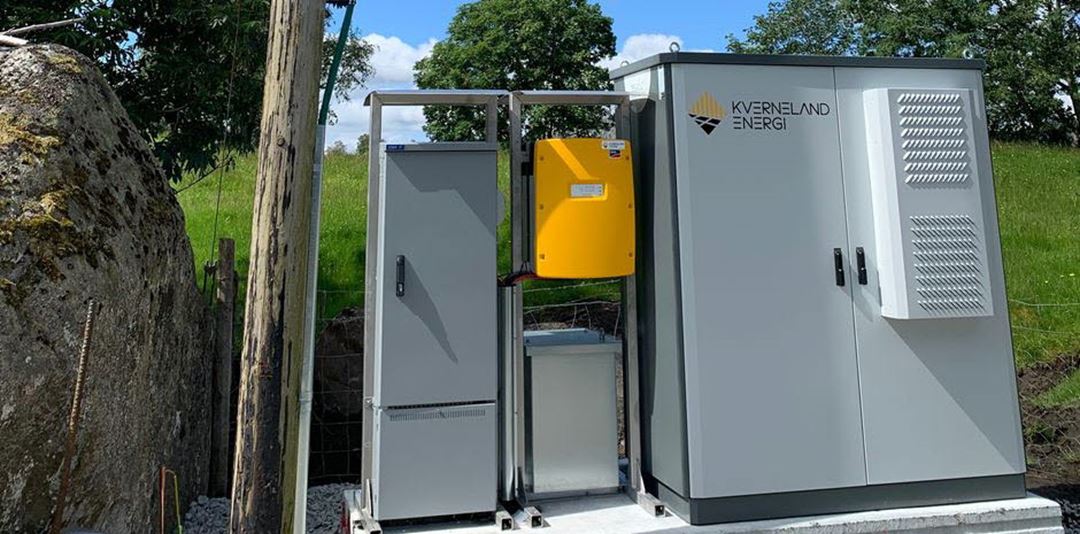Some distribution grids are currently experiencing problems with voltage quality, and there is every reason to believe that these issues will become even more pressing as the electrification of society progresses.
This is the premise behind Lyse Elnett’s pilot project that, among other things, is conducting tests to identify optimum voltage regulation parameters in relation to grid load.
The project will focus on aspects such as response times to voltage variations, power losses and battery system efficiency.
Anxious this winter
The battery system is located in Ims in Sandnes, and was put into operation in August this year.
“We haven’t seen very many cost-benefit analyses yet, but we can see that the battery is working”, says Serigstad. “It doesn’t have the same speed of response that we’re looking for, but it is helping to keep the voltage stable. It is also important for us to see how the system works in full operation, and to monitor its stability and maintenance needs”, she says. Serigstad is anxious to see how the battery will perform during the winter when the load on the grid will be higher.
Detailed measurements
In brief, the battery system is installed in a small 230V overhead grid that supplies low voltage at certain periods. The system is made up of an outdoor battery housing containing four battery modules, three inverters and an intermediate transformer.
The battery can store 19.6 kWh and has an installed capacity of 18 kW. It is connected to the overhead line via a connection box. The box contains an automatic voltmeter that controls the flow of energy in and out of the grid, as well as an Elspec power quality meter.
“This provides us with the detailed measurements that we will use to analyse voltage quality and assess the efficiency of the system. Charging and discharging are regulated by the voltage level in such a way that the battery feeds power into the grid when voltage falls below a predefined level, and is then charged up when the voltage exceeds a predetermined upper threshold”, says Serigstad.
Benefits of batteries
Batteries have been increasing in popularity in recent years. The benefits are that they are mobile and have a multitude of different applications. This means that they can be installed precisely where they are needed. Serigstad believes that many battery systems will be installed in the grid in the years to come.
“We’re only looking into voltage support services as part of our project”, she says. “But the increase in electric vehicles on our roads will provide new opportunities because they can function as battery packs – feeding energy into the grid when they are parked, and charging up when demand is less great. It is likely that we will be seeing more of this in the future”, says Serigstad.
“But is it currently profitable to install batteries to provide voltage support today?
“We could improve voltage quality in our project much more cheaply”, she says. “The battery itself forms only part of the cost. Additional costs are linked to such aspects as adaptation of the grid, finding a suitable location to install the system end entering into contracts with landowners.



